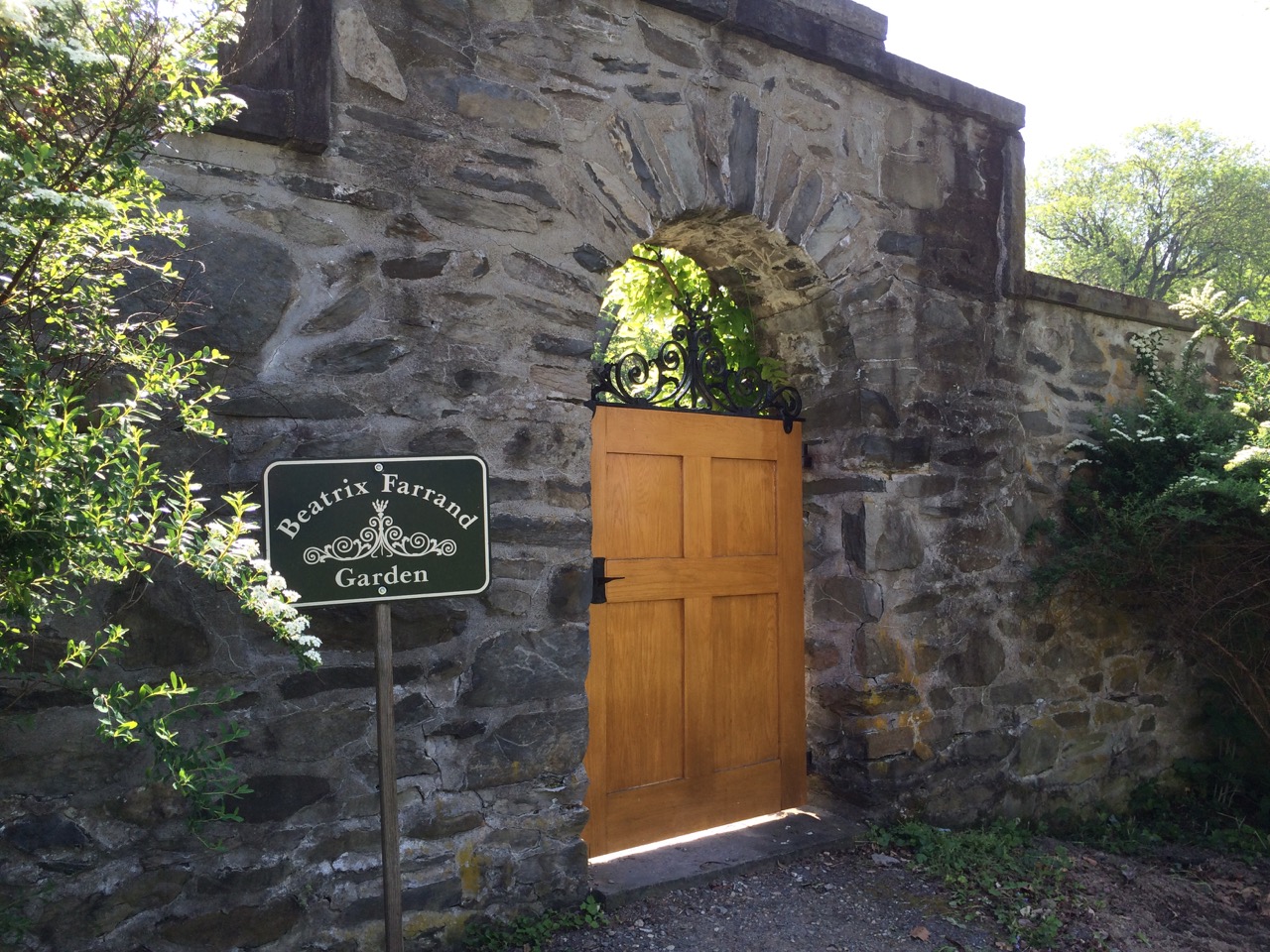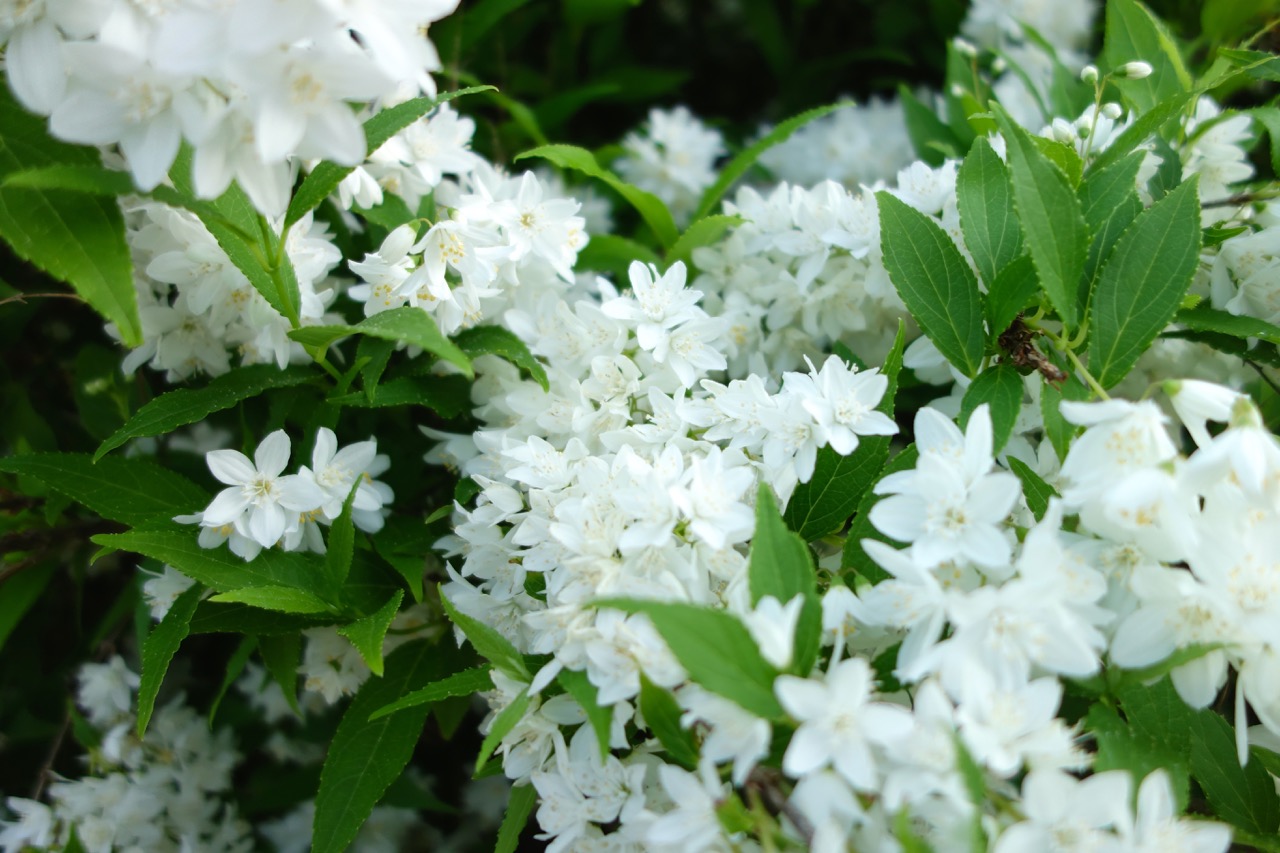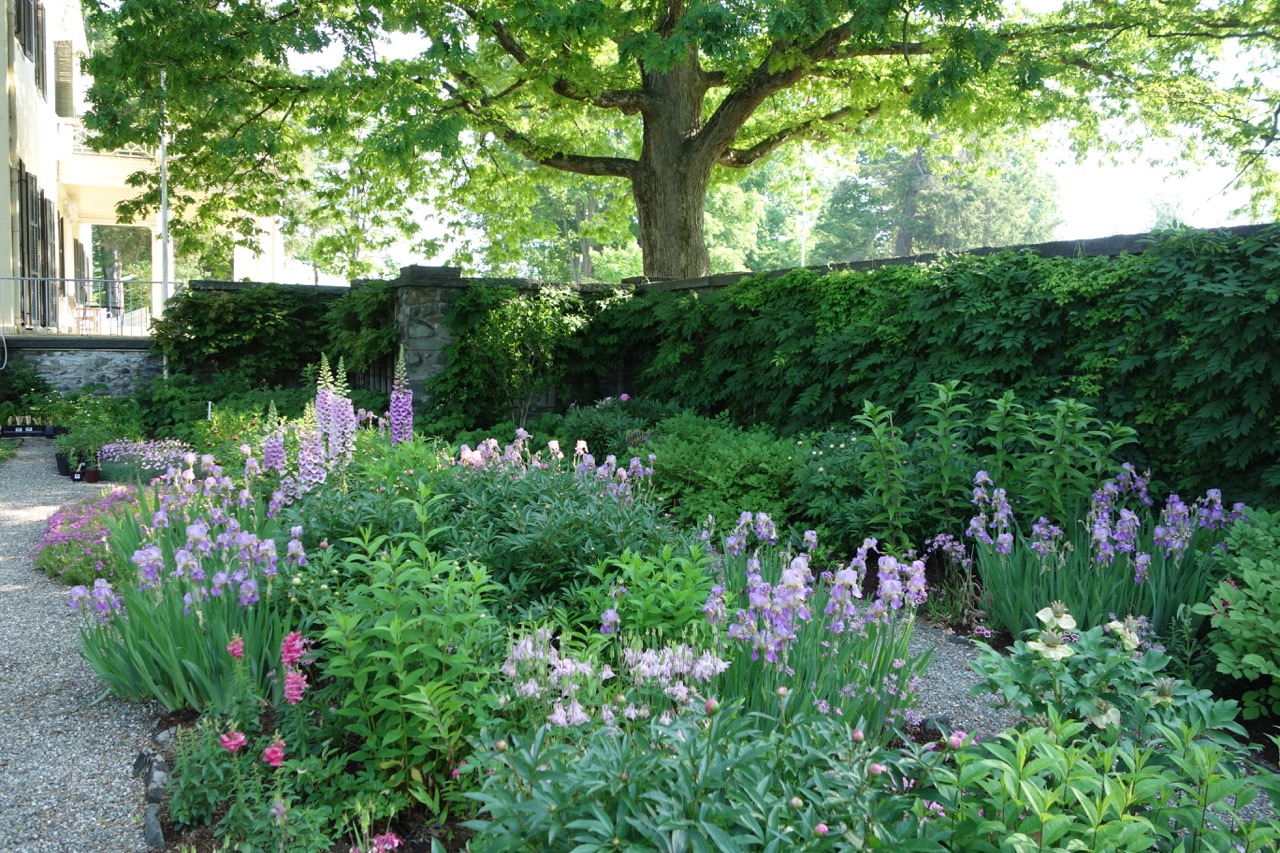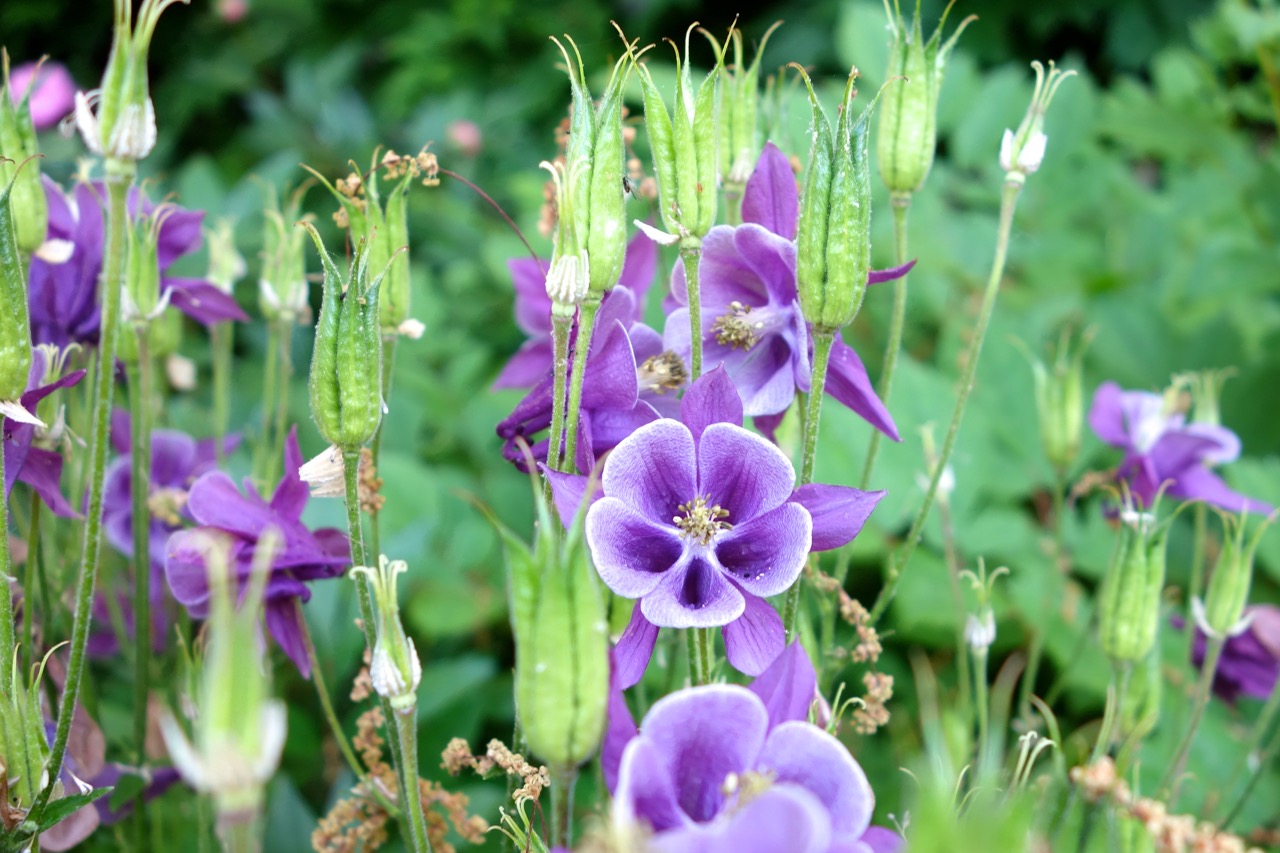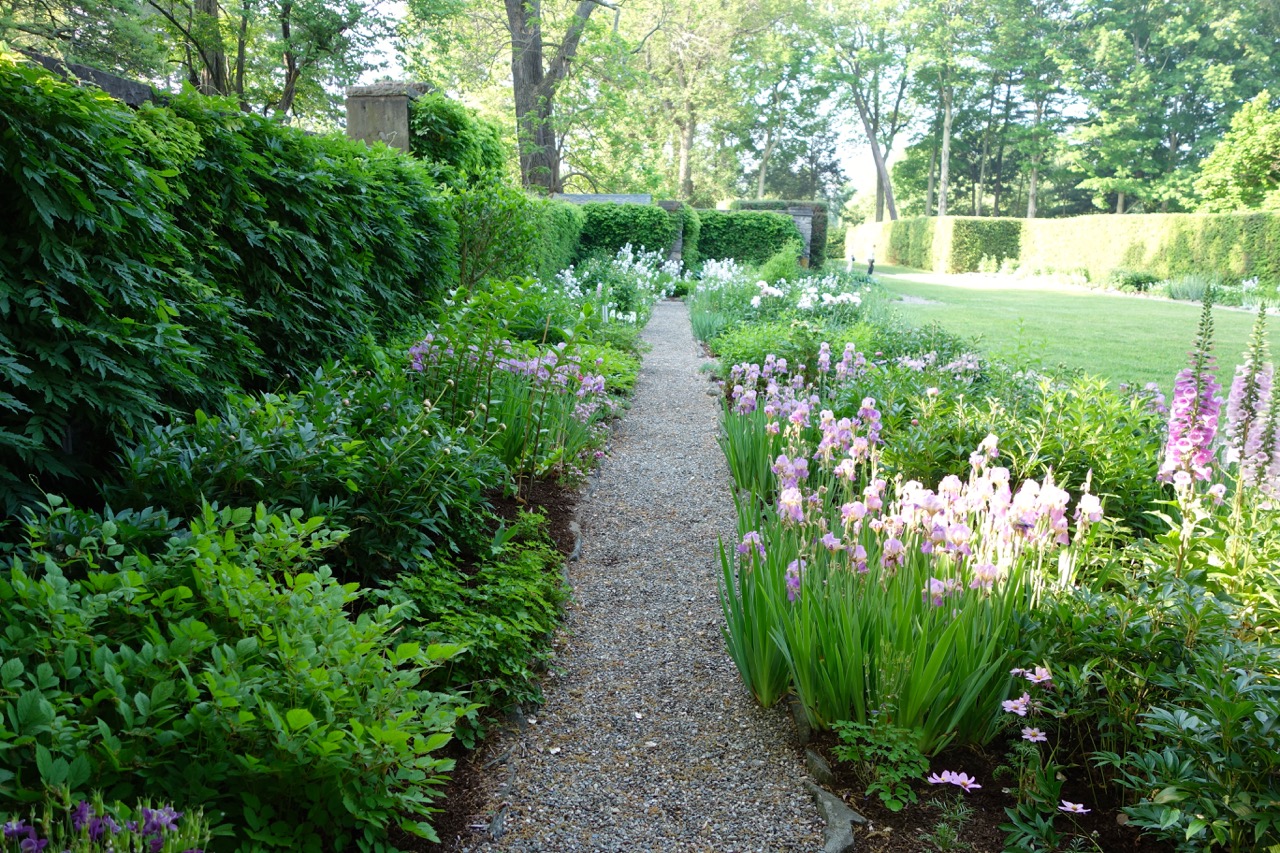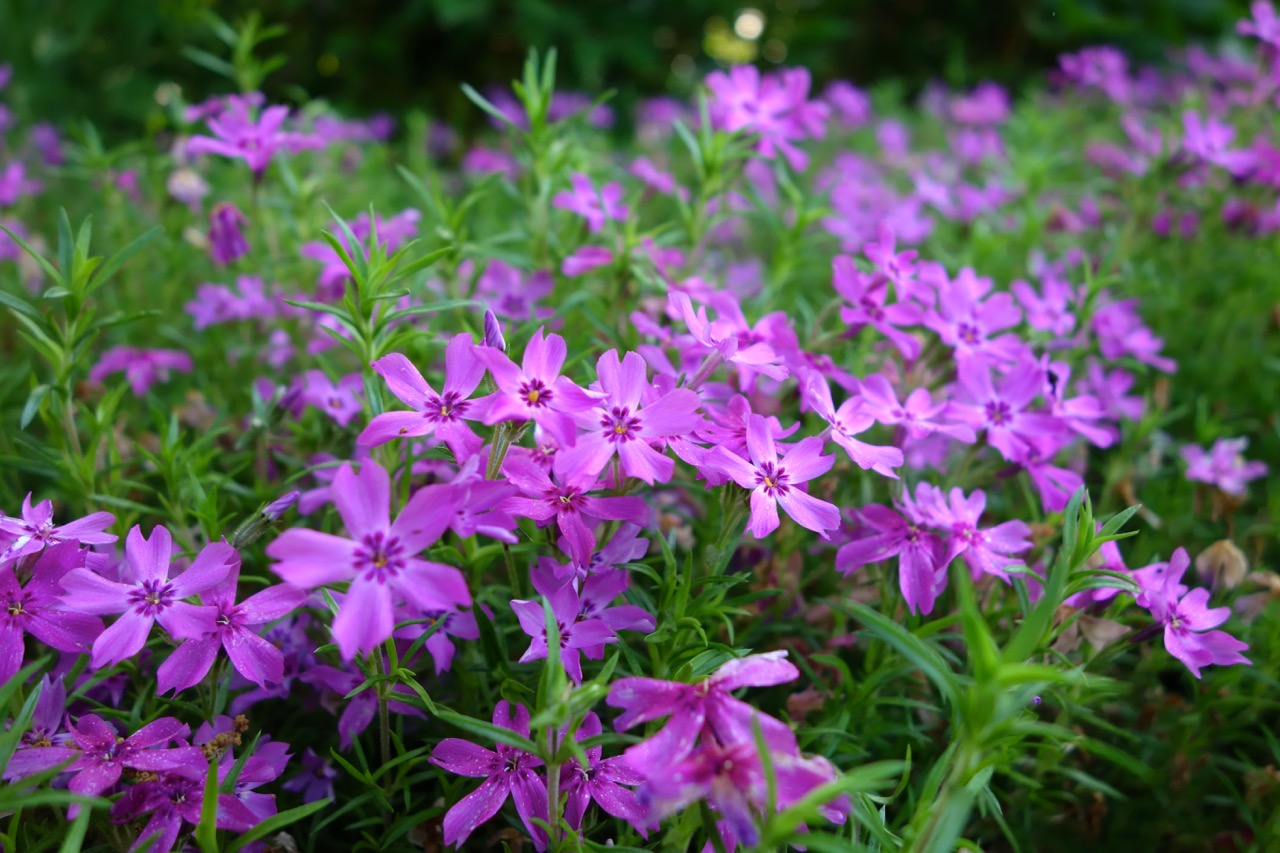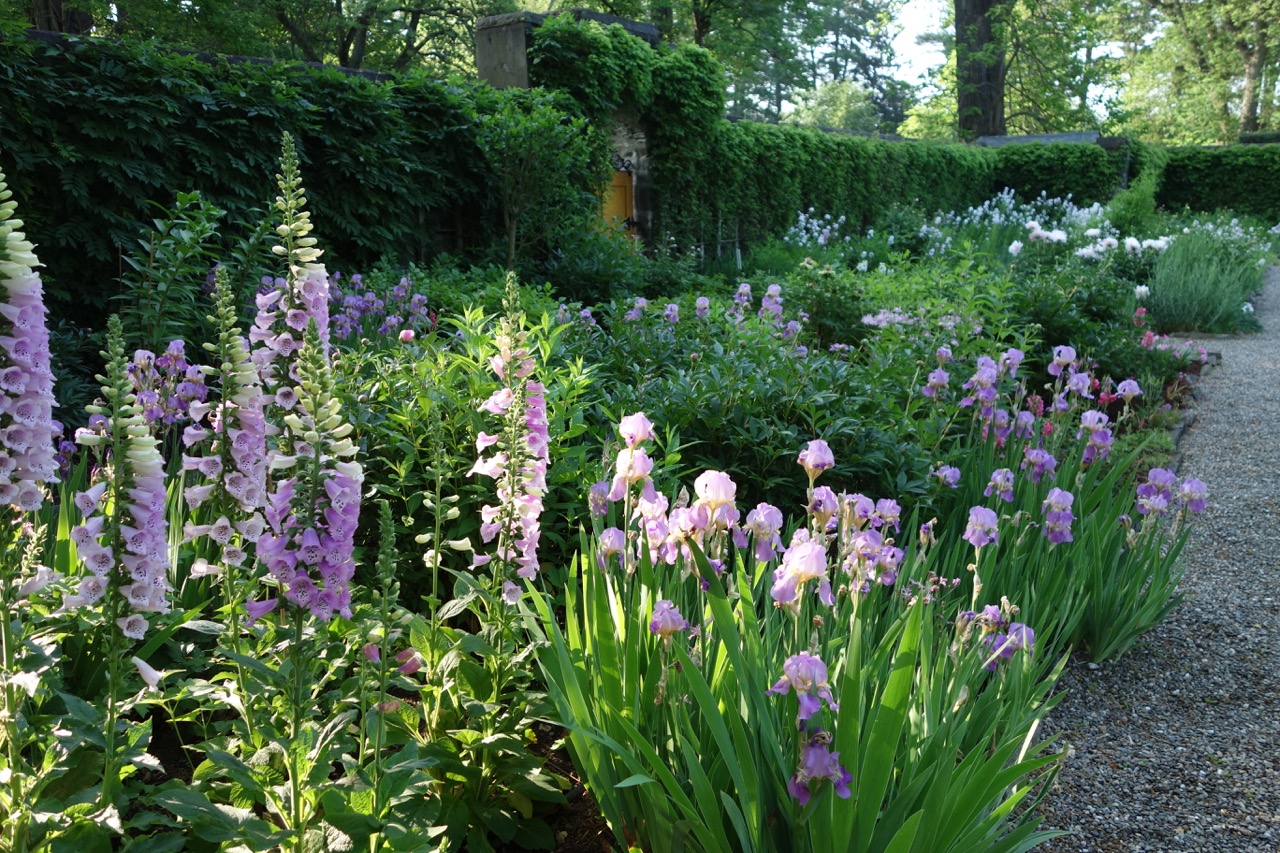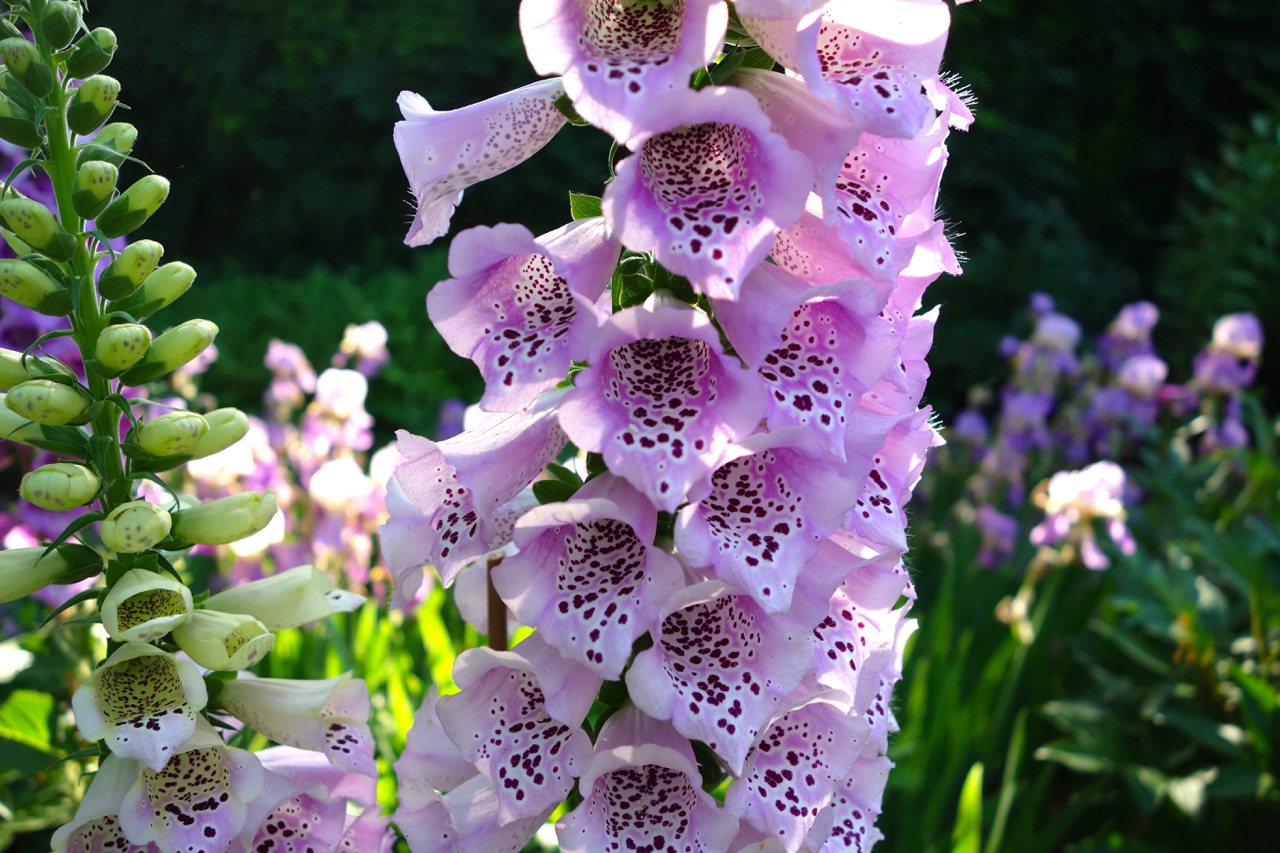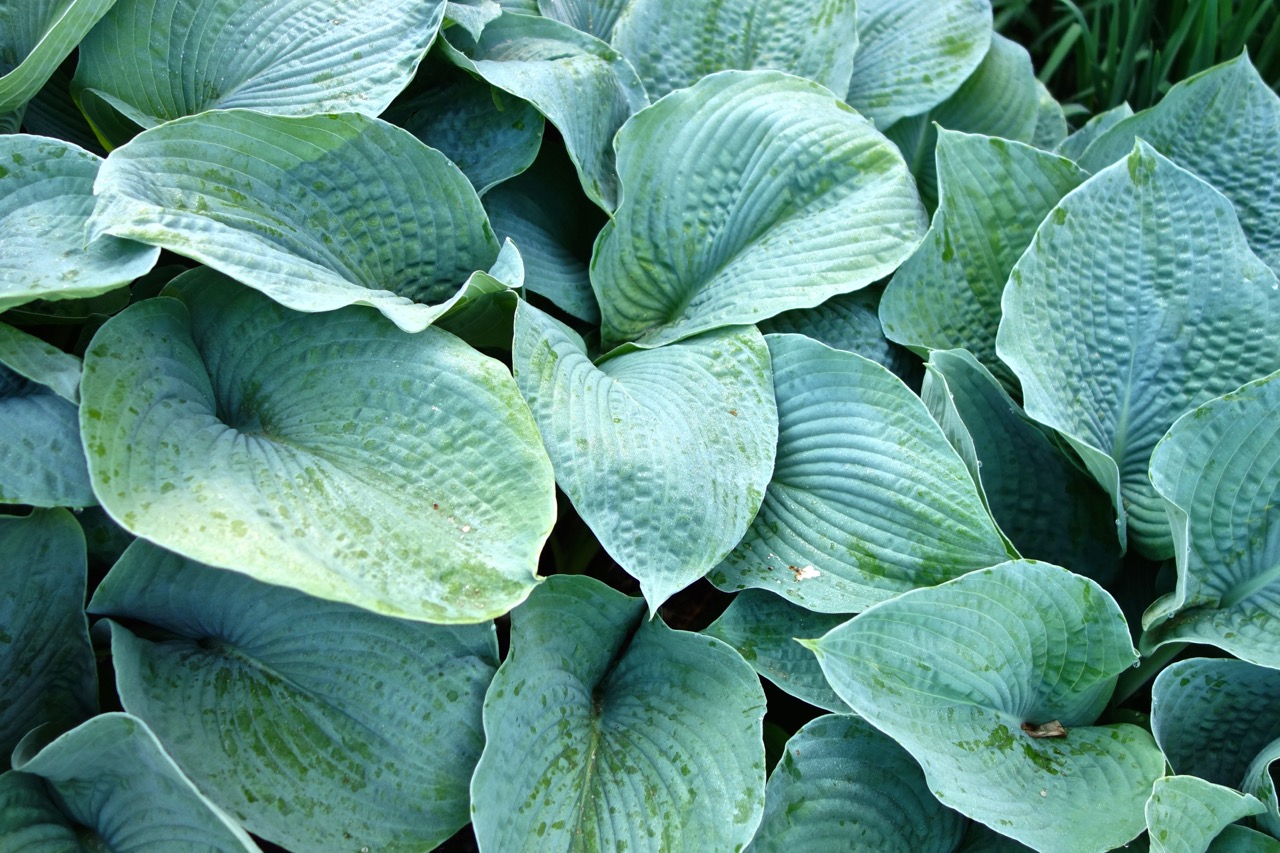For many things in life, bigger isn’t always better. It’s true for gardens. Beatrix Farrand’s garden at Bellefield, in Hyde Park, New York, is a good example.
Although her practice was limited to private clients (public works were kept for men), her decades long career included the Princeton and Yale University campuses and major private gardens like Dumbarton Oaks and the Rockefellers’ Eyrie Garden. As a result of the sustained quality of her work, Farrand became a founding member of the American Society of Landscape Architects.
Visiting her larger projects is inspiring but it can be difficult to adapt her techniques to smaller gardens. This is where the garden at Bellefield has a real impact. Despite its relatively small size, Farrand employed many of her signature techniques in it. A simple geometric layout, hand crafted hardscape with stone walls and iron and wood gates, and exuberant color borders.
Bellefield was built in 1912. The walled garden is on the left of the house.
On my recent visit it was these color borders that I found particularly inspiring. Her design included a loose mixture of sizes, shapes and textures, combined with the discipline of a single color scheme. This gave the space interest as well as a soothing consistency.
Bellefield was built as a private residence in 1912 for her cousins Thomas and Sarah Newbold. Farrand designed the garden as an intimate family outdoor space. Set on an axis to the house, the garden is a series of 3 diminishing rectangles arranged to make the garden look bigger.
The garden fell into disrepair but has been carefully restored by the Beatrix Farrand Garden Association. Executive Director Karen Smythe explained to me, "The restoration began in 1994 and it took several years before the garden was fully restored." Their work is particularly important because many of Farrand’s works have been lost.
Farrand's design includes 3 rectangular spaces framed by hemlock and stone walls.
Regarding the color borders Smythe shared, “Farrand designed color-themed borders in many of her most successful gardens. The garden at Bellefield includes four borders at the heart of the garden. These beds are arranged by color scheme: pink, white, mauve/ purple, and blush/ cream/ grey. Each border displays a beautiful progression throughout the growing season, another hallmark of the Farrand garden style.”
During my recent visit seen above, the pink border had blooming foxgloves, phlox, and columbine. In the white garden, cosmos, Japanese anemone, and peonies were out. And in the purple border irises stole the show. Plants are arranged in groupings that flow into each other.
The contrast of these unstructured flower beds against formal elements - rectangular grass areas, stone walls, and clipped hemlock hedges - give this garden its power.
I was drawn to the shady corners where the scheme includes green plants in varying shapes and textures and shades. Both restful and interesting.
Don’t miss a visit to this inspiring garden, and don’t be fooled by its size. Take the time to linger and see the layers of design going on here. This may not be Farrand’s biggest project but if you stop to look, you will see her design genius in a way that can be adapted to our own gardens.
One of the best parts of this landscape is that it is open from dawn to dusk! This means getting to see the space when light is the most magical.
Want to learn more about these color beds? The Beatrix Farrand Garden Association has detailed plant lists and planting schemes available on their website.

